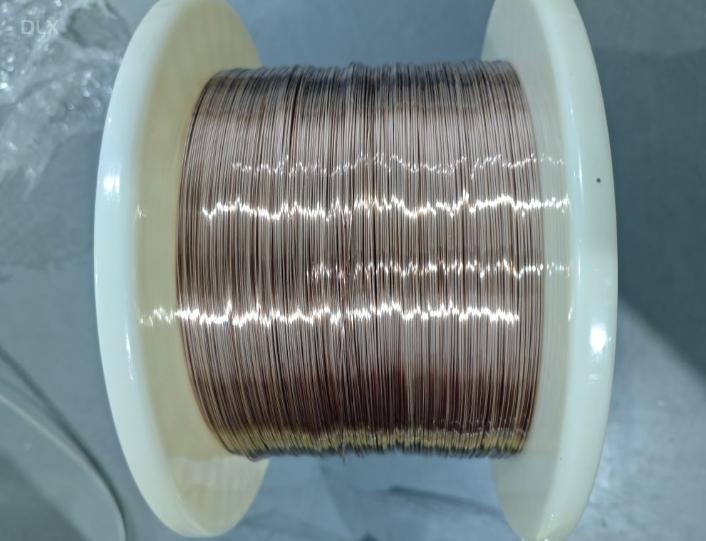
Manganin wire For Precision Resistors
- Product Details
What is Manganin Wire?

Manganin wire is a metallic alloy wire primarily composed of copper (Cu) (about 84-86%), manganese (Mn) (2-4%), and nickel (Ni) (10-12%). It is widely used in electrical applications that require high resistance stability, low temperature coefficient of resistance (TCR), and excellent long-term accuracy.
Key Characteristics of Manganin Wire
Stable Resistance:
Manganin wire exhibits extremely low variation in resistance over a wide range of temperatures, typically between 15°C and 35°C.
Low TCR (Temperature Coefficient of Resistance):
The resistance remains almost constant with changes in temperature, making it ideal for precision applications.
Corrosion Resistance:
Good resistance to oxidation and corrosion under normal environmental conditions.
Thermal EMF Properties:
Generates very low thermal electromotive force (EMF) against copper, which is advantageous in precision measurement applications.
Melting Point and Durability:
The melting point of manganin is around 960°C, and it exhibits good mechanical strength.
Applications of Manganin Wire
Resistors:
Used in low-resistance applications, such as current sensing resistors in power circuits.
Manganin wire is used in standard resistors and shunt resistors where accuracy and long-term stability are critical.
Ideal for power measurement and calibration devices.
Precision Resistors:
Low-Ohmic Resistors:
Electrical Measurement Devices:
Used in strain gauges and Wheatstone bridges due to its stable electrical properties.
Thermal Applications:
Used in environments requiring low heat generation and minimal resistance drift.
Shunts in Ammeter Circuits:
Manganin's low TCR and high stability make it suitable for use in precision shunts that measure high currents.
Temperature Compensation:
Its minimal TCR allows manganin wire to be used as a compensating element in circuits.
Advantages of Manganin Wire
Exceptional Stability: Resistance remains stable over time and under varying temperatures.
Low Thermal EMF: Makes it ideal for high-precision electrical measurement applications.
Durability: Resistant to mechanical wear and tear, as well as corrosion.
Wide Temperature Range: Operates effectively in environments with fluctuating temperatures.
Limitations
High Resistivity:
Manganin has higher electrical resistivity compared to pure copper, which limits its use in high-current applications unless specially designed.
Temperature Range:
While stable in a moderate temperature range, its resistance may drift at extreme high temperatures (above ~200°C) due to microstructural changes.
Cost:
As an alloy, manganin can be more expensive than standard resistance materials like Nichrome or copper.
Physical and Electrical Properties
| Property | Typical Value |
|---|---|
| Resistivity | ~43–48 μΩ·cm |
| Temperature Coefficient | ~±0.00001 / °C (15–35°C) |
| Density | ~8.4 g/cm³ |
| Melting Point | ~960°C |
| Thermal EMF (against Cu) | ~2 μV/°C |
Comparison to Nichrome
| Feature | Manganin | Nichrome |
|---|---|---|
| Stability | Extremely stable resistance | Stable, but less precise |
| TCR | Lower (better for precision) | Moderate |
| Temperature Use | Low to moderate temperatures | High-temperature heating elements |
| Applications | Precision electrical devices | Heating elements |
Manganin wire remains a gold standard for applications requiring precise, stable, and repeatable resistance performance. Let me know if you'd like to explore specific uses or alternatives!






